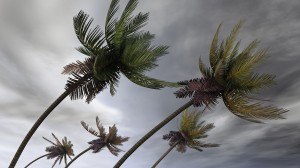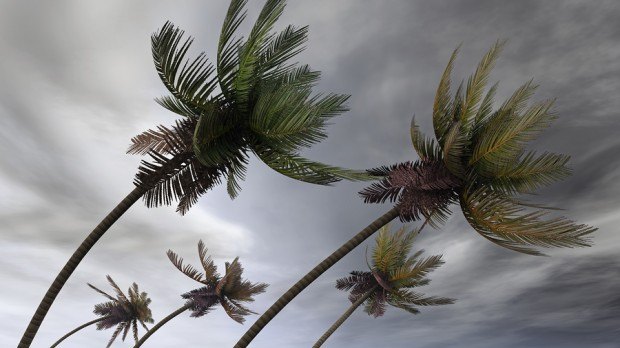Tropical Storm Dorian is gaining strength as it lumbers toward the Caribbean island of Barbados, potentially approaching hurricane strength by Tuesday. A second system is forming in the waters off the U.S. East Coast.
Dorian, with top winds of 60 miles (97 kilometers) per hour, was about 205 miles east-southeast of Barbados, where a tropical storm warning has been posted, the U.S. National Hurricane Center said in an 8 a.m. EDT advisory. The system is moving west at 14 mph and will probably reach the island late Monday or early Tuesday.
 The storm may bring 2 to 4 inches (5 to 10 centimeters) of rain to Barbados, the Windward Islands and Dominica, and could drench Puerto Rico later in the week. However, its small size and models that show Dorian potentially breaking up in a few days mean the potential for destruction is limited.
The storm may bring 2 to 4 inches (5 to 10 centimeters) of rain to Barbados, the Windward Islands and Dominica, and could drench Puerto Rico later in the week. However, its small size and models that show Dorian potentially breaking up in a few days mean the potential for destruction is limited.
“It looks mostly like a rainmaker,” Matt Rogers of Commodity Weather Group said by phone Monday. “Those islands can handle a tropical storm. They can even handle a low-end hurricane.”
Dorian may be approaching Puerto Rico by late Wednesday, with winds approaching 75 mph, Rogers said, just reaching Category 1 hurricane strength, which starts at 74 mph. However, some models show the storm waning by then, thanks to dry air and wind shear.
The current forecast may bring Dorian across Hispaniola by the end of the week, where the storm could be disrupted by the mountains, he said. The winds only reach about 45 miles from its center, according to the Hurricane Center.
Tropical storm warnings or watches have been posted for a number of other Caribbean islands, including St. Lucia, St. Vincent and the Grenadines, Grenada and Martinique.
Ahead of Dorian, another system gained strength overnight off the East Coast. As of 8 am, it was about 275 miles south-southeast of Cape Hatteras, North Carolina, with an 80% chance of becoming at least a tropical depression in the next two days. A tropical depression is the weakest system in the family of storms that includes hurricanes.
While packing weaker winds than hurricanes, tropical storms can still cause extensive damage and loss of life. In August 2015, Tropical Storm Erika killed at least 30 people and left 574 homeless when it raked Dominica, to the north of Barbados. Another person died on Haiti days later.
Hurricane season runs from June 1 to Nov. 30, but the peak of the season is happening now and will continue through early October. Atlantic hurricanes are closely watched because they can disrupt natural gas, oil and agriculture markets, as well as threaten billions of dollars in real estate both in the U.S. and across the region, including Caribbean islands that depend heavily on tourism.





















 Five AI Trends Reshaping Insurance in 2026
Five AI Trends Reshaping Insurance in 2026  Why the Middle Market Matters and How Insurers Can Capture It
Why the Middle Market Matters and How Insurers Can Capture It  Surge of Supercharged Hurricanes Prompt Call for Cat 6 Classification
Surge of Supercharged Hurricanes Prompt Call for Cat 6 Classification 



